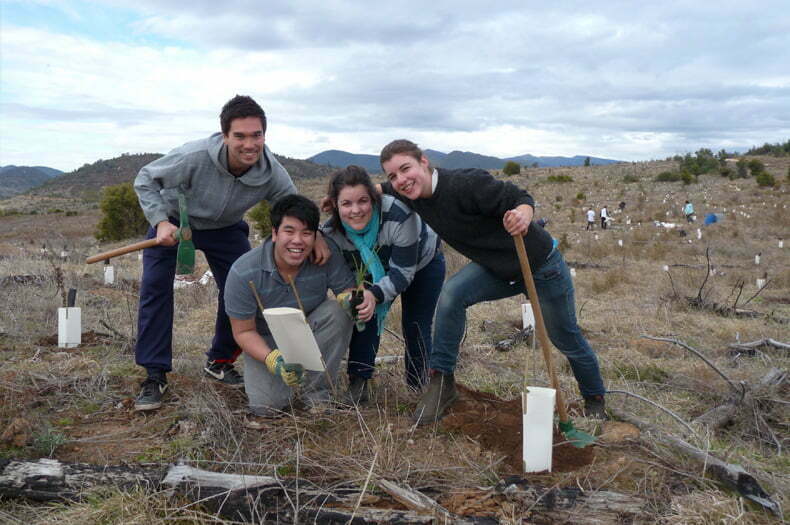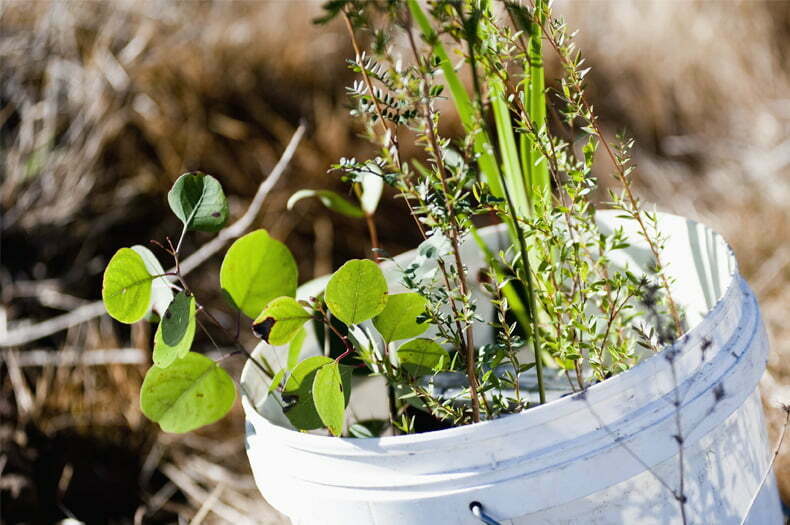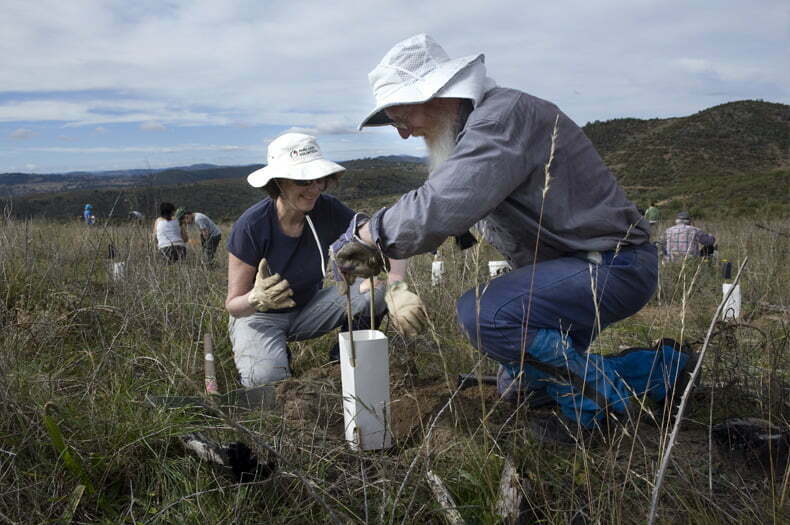The 18th of January 2018 marked the 15th anniversary of the Canberra bushfires which devastated the Canberra community and dramatically changed the landscape of the national capital. As well as taking the lives of four people and destroying hundreds of homes, the intense fires burnt through two thirds of the ACT including the forests of the Lower Cotter Catchment.
But from the ashes of this tragic event, the fire-affected areas of the Lower Cotter Catchment have seen a remarkable recovery thanks to the tireless efforts of the Canberra community. Over the past 15 years, an incredible 15,000 volunteers have helped plant over 300,000 seedlings across 500 hectares of the catchment, funded through a partnership between Greening Australia and the ACT Government.
The Lower Cotter is one of the major catchment areas for Canberra’s water supply, making it a priority area for revegetation. It also provides vital habitat for a range of threatened species, including Eastern Bettongs which are being reintroduced back onto the mainland.
To prevent erosion, improve water quality and create new habitat, seedlings from 64 different species of native trees, shrubs and grasses have been planted. These are now growing into diverse native forests, ensuring healthier water for local communities and vital new homes for native wildlife into the future.

“The response from the Canberra community has been amazing, with people from all walks of life coming together to help repair the charred landscapes surrounding the city. Huge community events and small regular volunteer groups have all contributed to the cause. The project provided a hands-on outlet for Canberrans wanting to help restore their local bush and heal themselves in the process,” says local Greening Australia Project Officer, Ian Rayner.
“Over 15,000 people have been involved in the project, dedicating nearly 50,000 hours of their time. By getting their hands dirty, volunteers from across our region have formed a connection to this place and come away with a greater understanding of its importance.”
While the main revegetation work has been completed, there is still ongoing work to maintain and enhance the site including monitoring, weed control, and small infill plantings. Volunteer citizen scientists are assisting our ACT team to check the sites.

“The community plantings have proved remarkably successful, with monitoring showing average survival rates of nearly 80% which is incredibly high. The information from our monitoring will also be useful for helping us improve our methods and species selection for future projects.”
“The regreening of the Lower Cotter Catchment is an achievement which the Canberra community can be incredibly proud of. Reflecting back on that very difficult time after the fires, it’s wonderful that something so positive came from the ashes.”

To get involved in the project, contact Greening Australia’s Canberra office.
This article was originally published on Greening Australia’s website.
